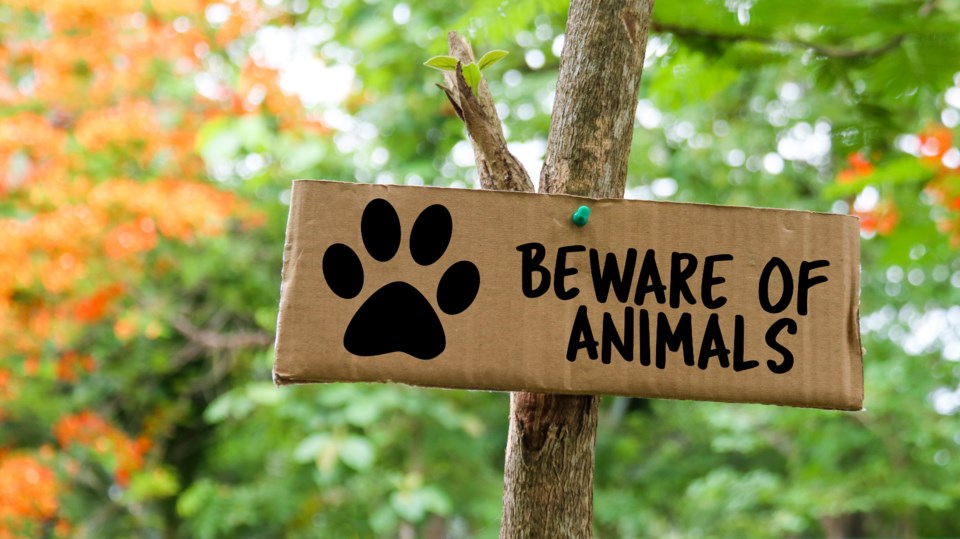Spanning a vast expanse of 9.98 million square kilometres (3.85 million square miles), Canada is a land of rich diversity, both in terms of its landscapes and its wildlife.
From the sprawling plains to the majestic mountains, the boreal forests to the frozen tundras, the country offers a home to a remarkable array of animals. In many remote corners, encountering a bear or a moose is just as likely as crossing paths with another human being.
However, these encounters with wild creatures can sometimes pose risks, especially in the secluded regions where they are more prevalent. Over the past decade, as more people have been drawn to traditional wildlife habitats for camping and living, the frequency of wildlife sightings and animal attacks has increased. One notable incident occurred in the village of Iskut, British Columbia, where a grizzly bear entered a cabin, rummaging through the freezer and food storage. Fortunately, the owner, a senior woman, managed to escape unharmed. Nonetheless, human-grizzly conflicts have been on the rise in the province, according to authorities.
Given Canadians' fondness for hiking in national parks and reserves during weekends, SportingPedia has revealed the likelihood of wild animal attacks in each of the 13 Canadian provinces and territories.
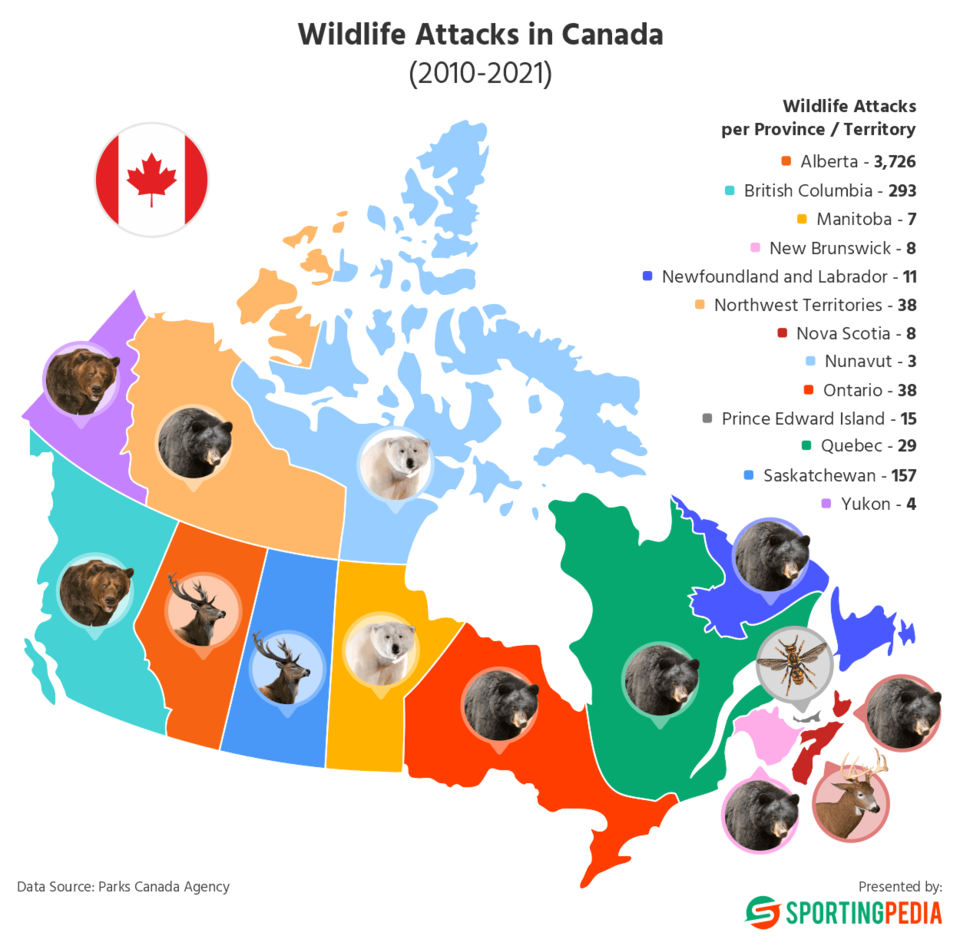
The Frequency of Animal Attacks in Each Province
The occurrence of wild animal attacks varies significantly across Canada's 10 provinces and three territories. This variance is attributed to both geographical factors and biodiversity, as well as the distribution of the country's population. The majority of Canadians reside along the Canada-US border, while the northern areas, such as the sparsely populated Nunavut territory, present a different set of risks. For instance, the likelihood of encountering a black bear in Nunavut is not the same as it is in British Columbia.
Alberta: 1 in 1,144 people attacked
Although approximately 80% of Albertans reside in urban areas, encounters with wildlife are not uncommon. Elk pose the greatest risk of attack or approach, despite their seemingly non-threatening appearance. These large mammals, weighing up to 500 kg, can become aggressive and charge without warning, particularly during calving season in Spring or during the mating season in late summer. Grizzly bear attacks also occur more frequently in Alberta compared to any other Canadian province. While bears generally avoid human contact, they may resort to bluff charging, jaw-popping, and ground swatting as intimidation tactics. Both black bears and grizzly bears exhibit extreme aggression when protecting their cubs.
British Columbia: 1 in 17,798 people attacked
Every year, the BC Conservation Officer Service receives over 25,000 reports of human-wildlife conflicts, with bears being the primary concern. The province is home to thousands of black and brown bears, as well as wolves, cougars, coyotes, moose, and deer. While grizzly bears account for the most common attacks, incidents involving wolves and black bears have also been reported. It is advisable to avoid hiking during the early morning and evening hours, as many of these animals tend to roam the forests during those times.
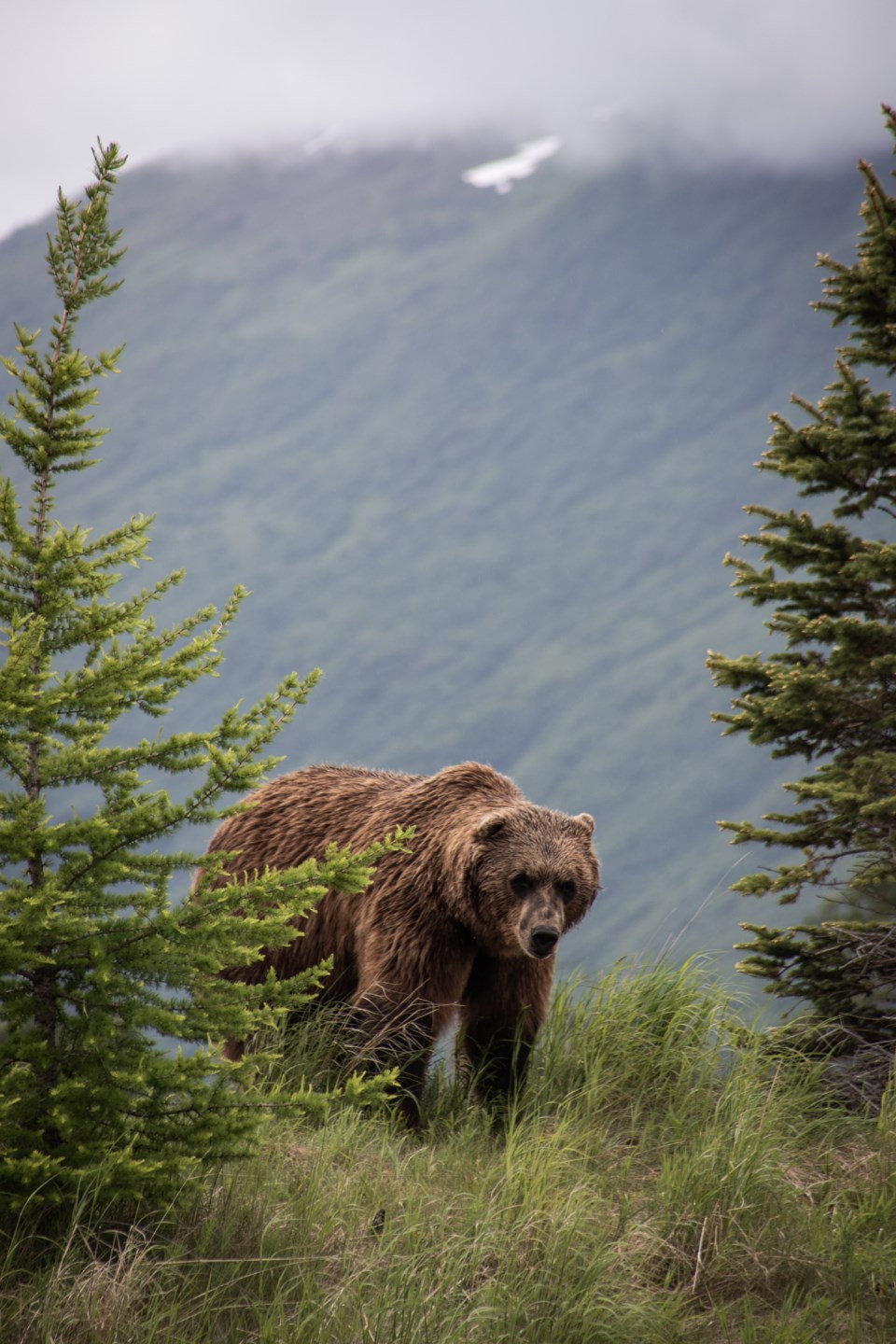
Manitoba 1 in 198,048 people attacked
Manitoba, with its diverse landscapes ranging from prairies in the south to tundra in the north, is home to a variety of large animals. Moose, white-tailed deer, black bears, cougars, lynx, and wolves inhabit the forests that cover almost half of the province's territory. In the northern regions, particularly around Hudson Bay and the town of Churchill, polar bears can be observed, making it a popular destination for wildlife enthusiasts. However, it's important to exercise caution as encounters with polar bears have become more frequent due to climate change. The melting of ice earlier in the summer and its later formation in the fall forces polar bears to spend more time on land, increasing the likelihood of human encounters and potential attacks.
New Brunswick 1 in 96,951 people attacked
Animal encounters are relatively uncommon in New Brunswick, although sightings of black bears, bobcats, lynx, and white-tailed deer in the wild are possible. The primary wildlife-related risk in this province arises from collisions with moose while driving. Authorities caution that approximately 400 motorists are involved in moose-vehicle crashes each year. Apart from this, the animal most likely to pose a threat in New Brunswick is the black bear.
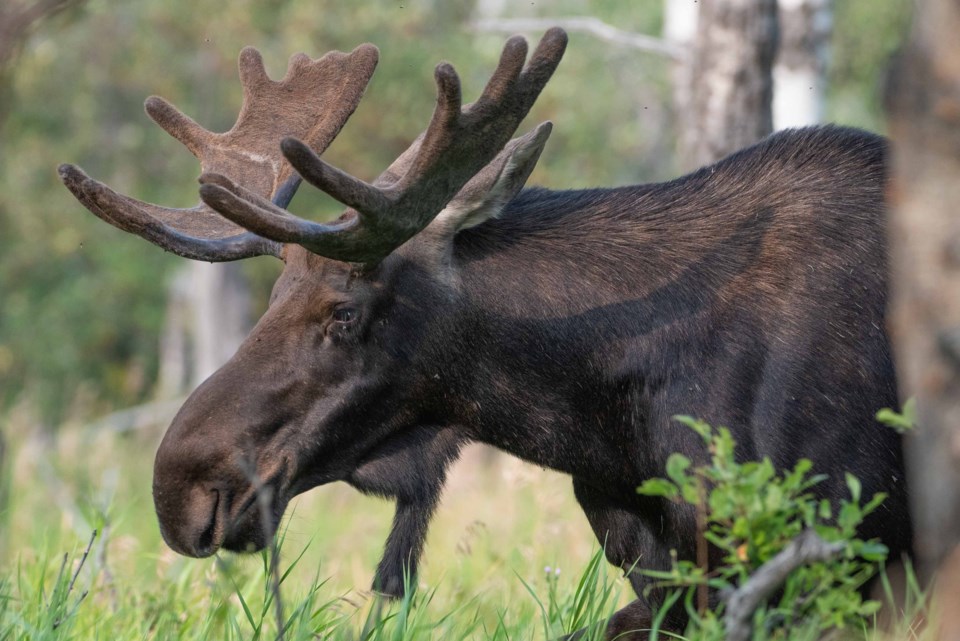
Newfoundland and Labrador 1 in 46,414 people attacked
Similar to New Brunswick, animal attacks are infrequent in Labrador and the island of Newfoundland. However, collisions with moose pose a significant danger to both the animal and motorists. Over the past 12 years, Parks Canada has documented a few encounters with wildlife, including black bears and gulls. Media reports also mention incidents involving moose and polar bears.
Northwest Territories 1 in 1,081 people attacked
The Northwest Territories generally do not rank among the most perilous regions in Canada, with rare instances of wild animal attacks. However, an exception lies in encounters with black bears. Over the past 12 years, Parks Canada has reported 27 incidents of direct human encounters with black bears, excluding cases where the animals caused property damage alone. It's important to note that the NWT is home not only to black bears but also to grizzly and polar bears, which pose an even greater risk.
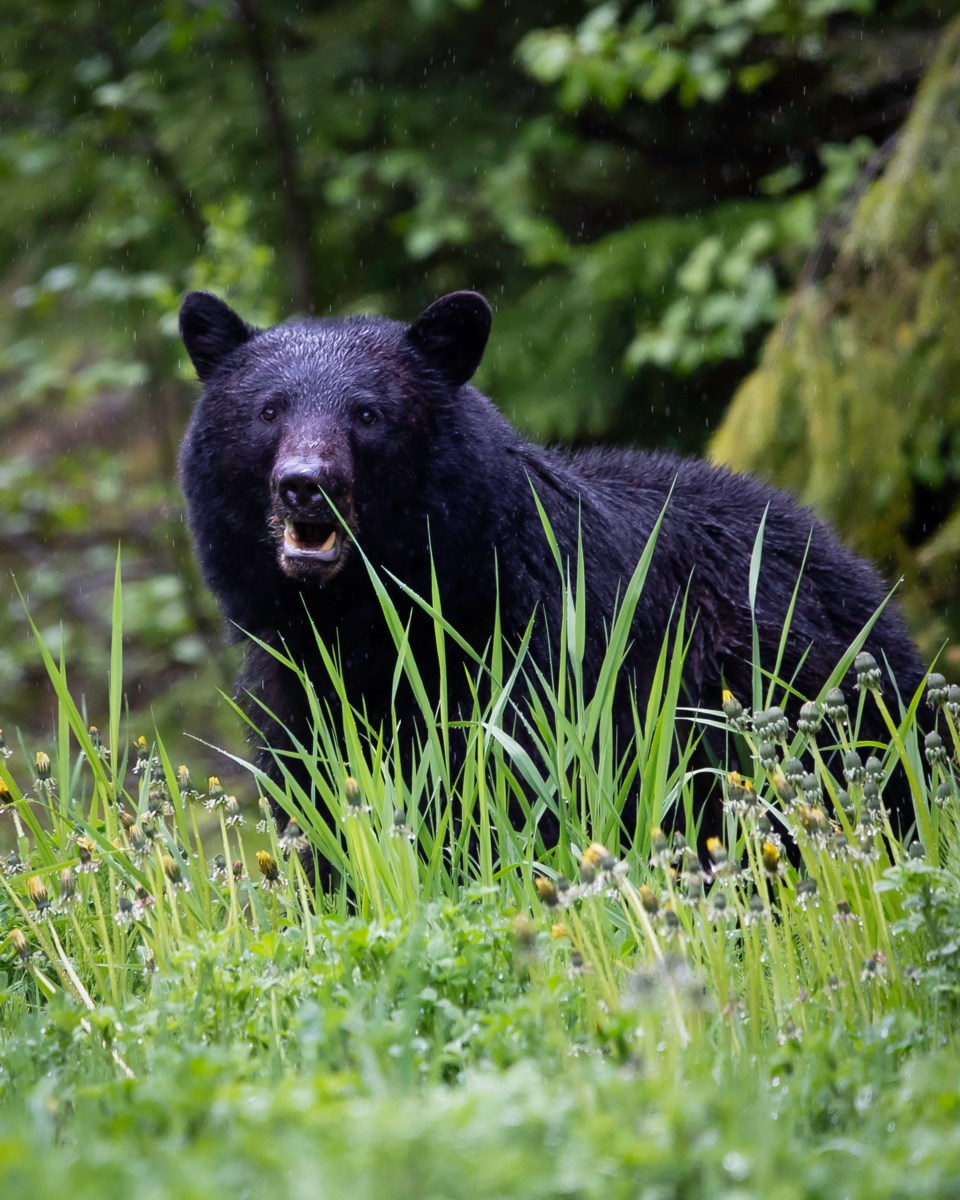
Nova Scotia 1 in 121,173 people attacked
Despite its small size, Nova Scotia is home to a diverse array of mammals and birds, most of which are unlikely to attack or approach humans. However, black bears can exhibit aggressive and highly dangerous behavior, although they are rarely sighted in the wild. Other species with potential risks in Nova Scotia include Gray wolves, coyotes, and, of course, moose and deer.
Nunavut 1 in 11,981 people attacked
Nunavut offers numerous opportunities to observe wildlife, including some of the world's most unique animals in their natural habitats. The waters of Nunavut are inhabited by walrus, narwhal, Greenland sharks, harp seals, and killer whales. Polar bears, which are the most likely animals to pose a threat, also inhabit the region. Wolves and wolverines can display aggression, but sightings of caribou and moose are more common.
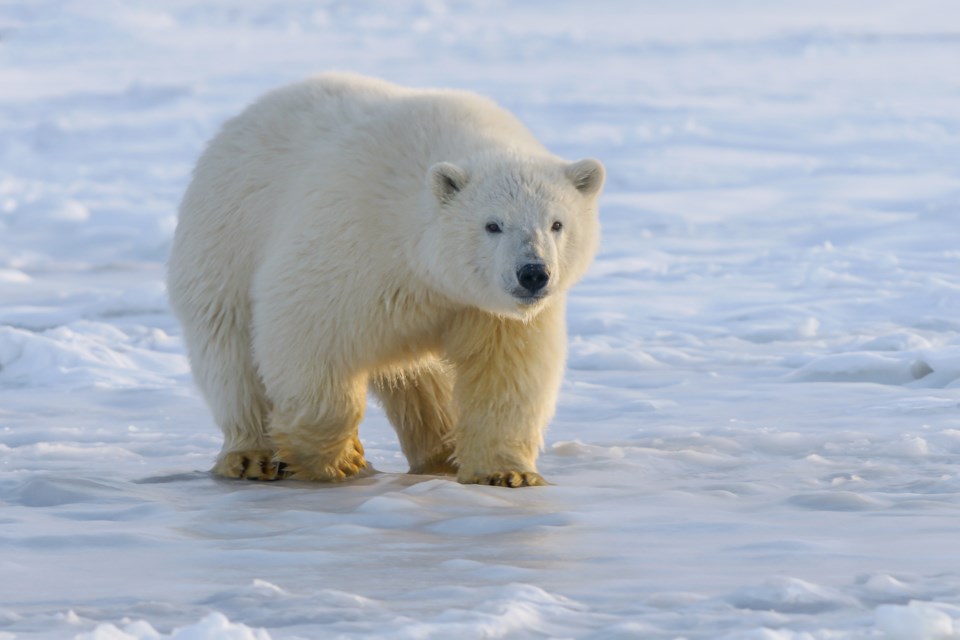
Ontario 1 in 374,318 people attacked
Ontario may not appear to be particularly hazardous, as most wild animals in the province are relatively harmless. Nonetheless, occasional encounters and attacks do occur, primarily involving black bears and rattlesnakes. The massasauga rattlesnake is Ontario's sole venomous snake and, although it typically avoids human contact, it will bite if it perceives a threat. Campers and tourists may unknowingly enter the snake's habitat and come across one. In the event of a bite, experts caution against attempting to suck out the venom or applying a tourniquet. Instead, it is advised to lie down, cleanse the bitten area, and call 911.
Prince Edward Island 1 in 10,289 people attacked
In the past two decades, dangerous encounters with wildlife on Prince Edward Island have been scarce due to the unfortunate extinction of most large species caused by hunting and habitat disruption. The island was once home to caribou, moose, wolves, and bears, but these animals are no longer found there. Red foxes and coyotes still inhabit the island, although the species most likely to pose a threat is the wasp.
While wild animals generally steer clear of human presence and seldom approach unless perceiving a direct threat, instances of them venturing into developed areas in search of food, particularly due to improperly stored garbage, do occur. It is worth noting that most incidents involving wildlife are predominantly centred around property damage rather than posing direct risks to humans or pets.
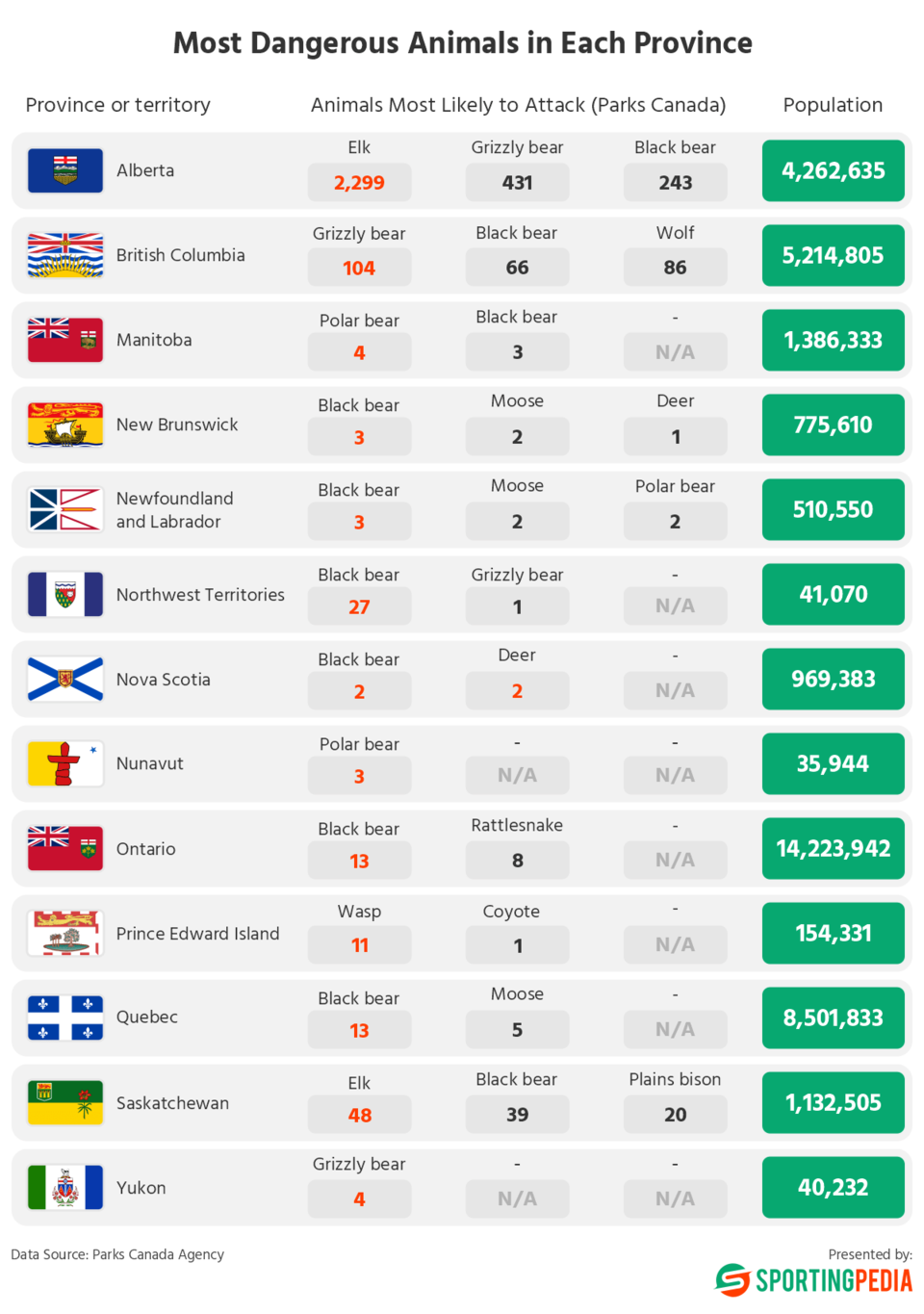
SportingPedia analyzed datasets for human-wildlife coexistence incidents in selected national parks over a twelve-year period from 2010 through 2021. These have been released by Parks Canada Agency through the Open Government Portal. SportingPedia also looked at incidents that were covered by local or national media, where most journalists tend to focus on fatal attacks or on incidents that caused severe injuries. Due to this fact, in research based only on media reports, fatal animal attacks tend to be over-represented.

